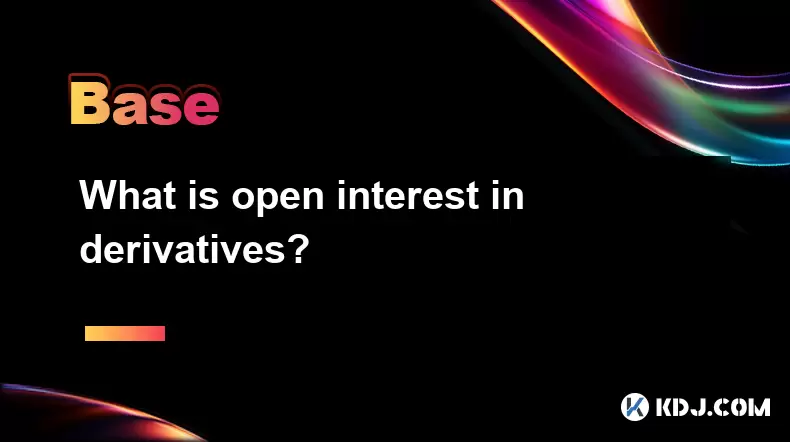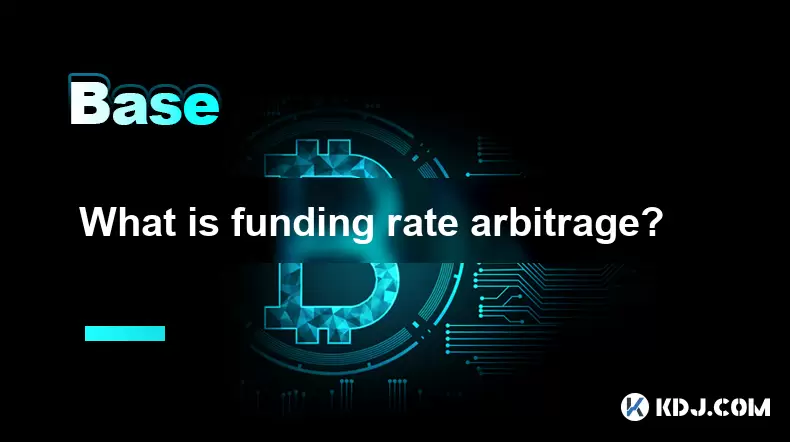-
 Bitcoin
Bitcoin $108,463.3266
-1.47% -
 Ethereum
Ethereum $2,535.8576
-3.62% -
 Tether USDt
Tether USDt $1.0006
0.02% -
 XRP
XRP $2.2352
-2.24% -
 BNB
BNB $658.1049
-0.63% -
 Solana
Solana $149.9207
-2.53% -
 USDC
USDC $0.9998
-0.07% -
 TRON
TRON $0.2857
0.45% -
 Dogecoin
Dogecoin $0.1659
-4.24% -
 Cardano
Cardano $0.5784
-3.85% -
 Hyperliquid
Hyperliquid $38.4944
-4.70% -
 Sui
Sui $2.9107
-4.19% -
 Bitcoin Cash
Bitcoin Cash $485.3637
-3.32% -
 Chainlink
Chainlink $13.3074
-4.18% -
 UNUS SED LEO
UNUS SED LEO $9.0499
0.41% -
 Avalanche
Avalanche $18.0347
-3.98% -
 Stellar
Stellar $0.2394
-2.23% -
 Toncoin
Toncoin $2.8110
-2.68% -
 Shiba Inu
Shiba Inu $0.0...01155
-3.23% -
 Litecoin
Litecoin $87.7967
-3.87% -
 Hedera
Hedera $0.1555
-2.87% -
 Monero
Monero $317.3839
-1.79% -
 Polkadot
Polkadot $3.4144
-4.90% -
 Dai
Dai $1.0000
-0.02% -
 Ethena USDe
Ethena USDe $1.0003
0.00% -
 Bitget Token
Bitget Token $4.4734
-2.29% -
 Uniswap
Uniswap $7.2556
-6.53% -
 Pepe
Pepe $0.0...09693
-7.27% -
 Aave
Aave $267.0924
-4.81% -
 Pi
Pi $0.4834
-3.31%
What is homomorphic encryption and its application scenarios?
Homomorphic encryption enables secure data processing in cryptocurrencies, allowing privacy-preserving transactions and confidential smart contracts.
Apr 07, 2025 at 10:35 pm

Homomorphic encryption is a form of encryption that allows computations to be performed on encrypted data without decrypting it first. This means that sensitive data can remain secure even while it is being processed, making it an invaluable tool in the realm of cryptocurrencies and blockchain technology. In this article, we will explore the concept of homomorphic encryption, its types, and its various application scenarios within the cryptocurrency circle.
Understanding Homomorphic Encryption
Homomorphic encryption is a cryptographic technique that enables data to be manipulated and analyzed while still in an encrypted state. This is particularly useful in scenarios where data privacy is paramount, as it allows for the processing of sensitive information without exposing it to potential breaches. There are three main types of homomorphic encryption: Partially Homomorphic Encryption (PHE), Somewhat Homomorphic Encryption (SHE), and Fully Homomorphic Encryption (FHE).
Partially Homomorphic Encryption allows for an unlimited number of operations of a single type (either addition or multiplication) on encrypted data. For example, the Paillier cryptosystem is a well-known PHE scheme that supports unlimited additions but only a limited number of multiplications.
Somewhat Homomorphic Encryption supports both addition and multiplication but only up to a certain complexity level. After a certain number of operations, the noise in the ciphertext grows too large, and the data becomes unusable.
Fully Homomorphic Encryption is the most advanced form, allowing for an unlimited number of both addition and multiplication operations on encrypted data. This type of encryption is still in the early stages of development and is not yet widely used due to its computational complexity.
Application Scenarios in Cryptocurrencies
Homomorphic encryption has several potential applications within the cryptocurrency ecosystem, particularly in areas where data privacy and security are critical.
Secure Multi-Party Computation
In the context of cryptocurrencies, secure multi-party computation (SMPC) is a technique that allows multiple parties to jointly perform computations on their private data without revealing their inputs to each other. Homomorphic encryption can be used to enhance SMPC by allowing computations to be performed on encrypted data. For instance, in a decentralized finance (DeFi) application, multiple parties might need to compute a shared value without revealing their individual contributions. Homomorphic encryption ensures that these computations can be done securely.
Privacy-Preserving Transactions
Privacy-preserving transactions are another area where homomorphic encryption can be beneficial. In cryptocurrencies like Bitcoin and Ethereum, transaction details are often visible on the blockchain, which can compromise user privacy. By using homomorphic encryption, it is possible to process transactions in a way that keeps the details encrypted, thus maintaining user privacy. For example, a user could encrypt their transaction amount and recipient address, and the network could process the transaction without ever seeing the actual data.
Confidential Smart Contracts
Confidential smart contracts are smart contracts that execute on encrypted data. This is particularly useful in scenarios where the contract's logic needs to remain private, such as in financial agreements or supply chain management. Homomorphic encryption allows the smart contract to perform operations on encrypted data, ensuring that the contract's execution remains confidential. For instance, a smart contract could be used to calculate interest on a loan without revealing the principal amount or the interest rate to the public.
Data Analytics on Encrypted Data
In the cryptocurrency space, data analytics on encrypted data can be crucial for businesses and organizations that need to analyze user behavior or transaction patterns without compromising user privacy. Homomorphic encryption enables these entities to perform complex data analytics on encrypted datasets, such as analyzing trading patterns or detecting fraudulent activities, without ever decrypting the data. This can be particularly useful for exchanges and other platforms that handle large volumes of sensitive data.
Implementing Homomorphic Encryption in Cryptocurrencies
Implementing homomorphic encryption in a cryptocurrency system involves several steps and considerations. Here is a detailed guide on how to integrate homomorphic encryption into a cryptocurrency platform:
Choose the Right Encryption Scheme: Depending on the specific needs of your platform, you may choose PHE, SHE, or FHE. For most current applications, PHE or SHE might be sufficient due to their lower computational overhead.
Integrate the Encryption Library: Select a reliable homomorphic encryption library that supports your chosen scheme. Libraries such as Microsoft SEAL or IBM HElib are popular choices.
Encrypt Data Before Processing: Before any data is processed or stored on the blockchain, it must be encrypted using the chosen homomorphic encryption scheme. This can be done at the user's end or by a trusted intermediary.
Perform Computations on Encrypted Data: Use the homomorphic properties of the encryption scheme to perform necessary computations. For example, if you are using PHE, you might perform additions on encrypted transaction amounts.
Decrypt Results When Necessary: Once the computations are complete, the results can be decrypted by authorized parties. This step should be carefully managed to ensure that only those with the necessary keys can access the decrypted data.
Test and Validate: Thoroughly test the implementation to ensure that it works as expected and that the encrypted data remains secure throughout the process. Validation should include both functional testing and security audits.
Challenges and Considerations
While homomorphic encryption offers significant benefits, there are also several challenges and considerations to keep in mind when implementing it in a cryptocurrency system.
Computational Overhead: Homomorphic encryption, especially FHE, can be computationally intensive. This can lead to slower transaction processing times and higher resource requirements, which may not be suitable for all cryptocurrency platforms.
Key Management: Managing encryption keys securely is crucial. If keys are compromised, the entire system's security can be at risk. Implementing robust key management systems is essential to protect the integrity of the encrypted data.
Scalability: As the number of transactions and users grows, the scalability of homomorphic encryption becomes a concern. Ensuring that the system can handle increased load without compromising performance is a significant challenge.
Interoperability: Different cryptocurrency platforms may use different encryption schemes, which can complicate interoperability. Ensuring that encrypted data can be processed across different systems is an important consideration.
Real-World Examples
Several projects within the cryptocurrency space are already exploring the use of homomorphic encryption. Here are a few notable examples:
Zcash: Zcash uses a form of zero-knowledge proofs, which can be seen as a related concept to homomorphic encryption. While not directly using homomorphic encryption, Zcash's privacy features are designed to protect transaction details, similar to what homomorphic encryption aims to achieve.
Enigma: Enigma is a decentralized computation platform that uses homomorphic encryption to enable secure and private data processing. It allows users to perform computations on encrypted data, which can be particularly useful for privacy-preserving applications in the cryptocurrency space.
NuCypher: NuCypher is a decentralized key management system that uses homomorphic encryption to enable secure data sharing and access control. It allows users to encrypt data and share it with others without revealing the underlying information.
Frequently Asked Questions
Q: Can homomorphic encryption be used to protect wallet private keys?
A: While homomorphic encryption can be used to process encrypted data, it is not typically used to protect wallet private keys directly. Private keys are usually secured using other cryptographic methods like elliptic curve cryptography. However, homomorphic encryption could be used to perform operations on encrypted data related to wallet management, such as calculating balances or transaction amounts without exposing the actual values.
Q: Is homomorphic encryption compatible with all blockchain platforms?
A: Homomorphic encryption can be integrated into various blockchain platforms, but compatibility depends on the specific implementation and the capabilities of the platform. Some platforms may have built-in support for homomorphic encryption, while others may require custom development to integrate it effectively.
Q: How does homomorphic encryption affect the performance of a cryptocurrency network?
A: Homomorphic encryption can significantly impact the performance of a cryptocurrency network due to its computational overhead. Transactions and operations on encrypted data may take longer to process, and the network may require more resources to handle the increased computational load. However, advancements in homomorphic encryption algorithms and hardware acceleration can help mitigate these performance issues.
Q: Are there any regulatory considerations when using homomorphic encryption in cryptocurrencies?
A: Regulatory considerations for using homomorphic encryption in cryptocurrencies can vary by jurisdiction. Some regions may have specific data protection laws that encourage or require the use of advanced encryption techniques like homomorphic encryption. However, the use of such technologies must also comply with any applicable regulations regarding financial transactions and data privacy. It is important to consult with legal experts to ensure compliance with all relevant laws and regulations.
Disclaimer:info@kdj.com
The information provided is not trading advice. kdj.com does not assume any responsibility for any investments made based on the information provided in this article. Cryptocurrencies are highly volatile and it is highly recommended that you invest with caution after thorough research!
If you believe that the content used on this website infringes your copyright, please contact us immediately (info@kdj.com) and we will delete it promptly.
- Bitcoin's Pattern Break: Are HODLers the Key to the Next Surge?
- 2025-07-04 18:50:12
- Bitcoin Price, Trump's Bill, and the $150K Dream: A NYC Take
- 2025-07-04 19:50:12
- Ethereum, LILPEPE, and the July Bounce: Will Pepe Steal ETH's Thunder?
- 2025-07-04 19:10:12
- Binance Institutional Loans: Unlocking 4x Leverage and Zero Interest for Whales
- 2025-07-04 19:15:12
- Bitcoin Bull Run: Analysts Eye Peak in Late 2025?
- 2025-07-04 19:20:13
- Pepe Indicators, Bullish Forecast: Can the Meme Coin Rally?
- 2025-07-04 19:25:12
Related knowledge

What is a user-generated content (UGC) NFT platform?
Jul 04,2025 at 01:49pm
Understanding the Concept of a UGC NFT PlatformA user-generated content (UGC) NFT platform is a digital marketplace or ecosystem where users can create, mint, and trade non-fungible tokens (NFTs) that represent ownership of original digital content they produce. Unlike traditional NFT platforms where creators often include professional artists or develo...

What is a token generation event (TGE)?
Jul 04,2025 at 07:14am
Understanding the Basics of a Token Generation Event (TGE)A Token Generation Event (TGE) refers to the process through which a blockchain project creates and distributes its native tokens to investors, participants, or stakeholders. This event is often associated with new cryptocurrency projects launching on platforms like Ethereum, Binance Smart Chain,...

What is a block explorer API?
Jul 04,2025 at 05:07am
Understanding the Role of a Block Explorer APIA block explorer API is a crucial interface that enables developers and users to interact programmatically with blockchain data. Unlike traditional APIs used in web services, a block explorer API specifically provides access to blockchain-related information such as transaction details, wallet balances, bloc...

What is a leveraged yield farming?
Jul 04,2025 at 09:36am
Understanding Leveraged Yield FarmingLeveraged yield farming is a more advanced form of yield farming, which itself is a popular method in the decentralized finance (DeFi) ecosystem to earn returns by providing liquidity to various protocols. In traditional yield farming, users deposit tokens into a DeFi platform and earn rewards in return, often in the...

What is open interest in derivatives?
Jul 03,2025 at 02:49pm
Understanding Open Interest in DerivativesOpen interest is a critical metric used in the cryptocurrency derivatives market, particularly when analyzing futures and options contracts. It represents the total number of outstanding contracts that have not been settled or closed by either party involved. Unlike trading volume, which counts all trades made i...

What is funding rate arbitrage?
Jul 04,2025 at 11:43am
Understanding Funding Rate Arbitrage in the Cryptocurrency MarketFunding rate arbitrage is a trading strategy employed by crypto traders to exploit differences in funding rates across various perpetual futures exchanges. In perpetual contracts, funding rates are periodic payments made between long and short traders depending on whether the price of the ...

What is a user-generated content (UGC) NFT platform?
Jul 04,2025 at 01:49pm
Understanding the Concept of a UGC NFT PlatformA user-generated content (UGC) NFT platform is a digital marketplace or ecosystem where users can create, mint, and trade non-fungible tokens (NFTs) that represent ownership of original digital content they produce. Unlike traditional NFT platforms where creators often include professional artists or develo...

What is a token generation event (TGE)?
Jul 04,2025 at 07:14am
Understanding the Basics of a Token Generation Event (TGE)A Token Generation Event (TGE) refers to the process through which a blockchain project creates and distributes its native tokens to investors, participants, or stakeholders. This event is often associated with new cryptocurrency projects launching on platforms like Ethereum, Binance Smart Chain,...

What is a block explorer API?
Jul 04,2025 at 05:07am
Understanding the Role of a Block Explorer APIA block explorer API is a crucial interface that enables developers and users to interact programmatically with blockchain data. Unlike traditional APIs used in web services, a block explorer API specifically provides access to blockchain-related information such as transaction details, wallet balances, bloc...

What is a leveraged yield farming?
Jul 04,2025 at 09:36am
Understanding Leveraged Yield FarmingLeveraged yield farming is a more advanced form of yield farming, which itself is a popular method in the decentralized finance (DeFi) ecosystem to earn returns by providing liquidity to various protocols. In traditional yield farming, users deposit tokens into a DeFi platform and earn rewards in return, often in the...

What is open interest in derivatives?
Jul 03,2025 at 02:49pm
Understanding Open Interest in DerivativesOpen interest is a critical metric used in the cryptocurrency derivatives market, particularly when analyzing futures and options contracts. It represents the total number of outstanding contracts that have not been settled or closed by either party involved. Unlike trading volume, which counts all trades made i...

What is funding rate arbitrage?
Jul 04,2025 at 11:43am
Understanding Funding Rate Arbitrage in the Cryptocurrency MarketFunding rate arbitrage is a trading strategy employed by crypto traders to exploit differences in funding rates across various perpetual futures exchanges. In perpetual contracts, funding rates are periodic payments made between long and short traders depending on whether the price of the ...
See all articles

























































































